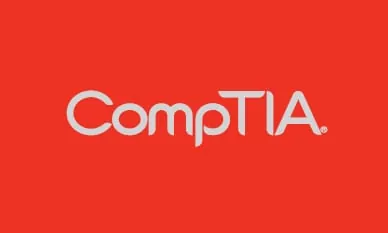You landed here because NET+008 is a replacement for the following:
NET+007: CompTIA Network+ Certification Training

Lesson 1: Comparing OSI Model Network Functions
- Topic 1A: Compare and Contrast OSI Model Layers
- Topic 1B: Configure SOHO Networks
Lesson 2: Deploying Ethernet Cabling
- Topic 2A: Summarize Ethernet Standards
- Topic 2B: Summarize Copper Cabling Types
- Topic 2C: Summarize Fiber Optic Cabling Types
- Topic 2D: Deploy Ethernet Cabling
Lesson 3: Deploying Ethernet Switching
- Topic 3A: Deploy Networking Devices
- Topic 3B: Explain Network Interfaces
- Topic 3C: Deploy Common Ethernet Switching Features
Lesson 4: Troubleshooting Ethernet Networks
- Topic 4A: Explain Network Troubleshooting Methodology
- Topic 4B: Troubleshoot Common Cable Connectivity Issues
Lesson 5: Explaining IPv4 Addressing
- Topic 5A: Explain IPv4 Addressing Schemes
- Topic 5B: Explain IPv4 Forwarding
- Topic 5C: Configure IP Networks and Subnets
Lesson 6: Supporting IPv4 and IPv6 Networks
- Topic 6A: Use Appropriate Tools to Test IP Configuration
- Topic 6B: Troubleshoot IP Networks
- Topic 6C: Explain IPv6 Addressing Schemes
Lesson 7: Configuring and Troubleshooting Routers
- Topic 7A: Compare and Contrast Routing Concepts
- Topic 7B: Compare and Contrast Dynamic Routing Concepts
- Topic 7C: Install and Troubleshoot Routers
Lesson 8: Explaining Network Topologies and Types
- Topic 8A: Explain Network Types and Characteristics
- Topic 8B: Explain Tiered Switching Architecture
- Topic 8C: Explain Virtual LANs
Lesson 9: Explaining Transport Layer Protocols
- Topic 9A: Compare and Contrast Transport Protocols
- Topic 9B: Use Appropriate Tools to Scan Network Ports
Lesson 10: Explaining Network Services
- Topic 10A: Explain the Use of Network Addressing Services
- Topic 10B: Explain the Use of Name Resolution Services
- Topic 10C: Configure DNS Services
Lesson 11: Explaining Network Applications
- Topic 11A: Explain the Use of Web, File/Print, and Database Services
- Topic 11B: Explain the Use of Email and Voice Services
Lesson 12: Ensuring Network Availability
- Topic 12A: Explain the Use of Network Management Services
- Topic 12B: Use Event Management to Ensure Network Availability
- Topic 12C: Use Performance Metrics to Ensure Network Availability
Lesson 13: Explaining Common Security Concepts
- Topic 13A: Explain Common Security Concepts
- Topic 13B: Explain Authentication Methods
Lesson 14: Supporting and Troubleshooting Secure Networks
- Topic 14A: Compare and Contrast Security Appliances
- Topic 14B: Troubleshoot Service and Security Issues
Lesson 15: Deploying and Troubleshooting Wireless Networks
- Topic 15A: Summarize Wireless Standards
- Topic 15B: Install Wireless Networks
- Topic 15C: Troubleshoot Wireless Networks
- Topic 15D: Configure and Troubleshoot Wireless Security
Lesson 16: Comparing WAN Links and Remote Access Methods
- Topic 16A: Explain WAN Provider Links
- Topic 16B: Compare and Contrast Remote Access Methods
Lesson 17: Explaining Organizational and Physical Security Concepts
- Topic 17A: Explain Organizational Documentation and Policies
- Topic 17B: Explain Physical Security Methods
- Topic 17C: Compare and Contrast Internet of Things Devices
Lesson 18: Explaining Disaster Recovery and High Availability Concepts
- Topic 18A: Explain Disaster Recovery Concepts
- Topic 18B: Explain High Availability Concepts
Lesson 19: Applying Network Hardening Techniques
- Topic 19A: Compare and Contrast Types of Attacks
- Topic 19B: Apply Network Hardening Techniques
Lesson 20: Summarizing Cloud and Datacenter Architecture
- Topic 20A: Summarize Cloud Concepts
- Topic 20B: Explain Virtualization and Storage Area Network Technologies
- Topic 20C: Explain Datacenter Network Architecture
The Official CompTIA Network+ Guide (Exam N10-008) is the primary course you will need to take if your job responsibilities include network administration, installation, and security within your organization. You can take this course to prepare for the CompTIA Network+ (Exam N10-008) certification examination.
To ensure your success in this course, you should have basic IT skills comprising nine to twelve months’ experience. CompTIA A+ certification, or the equivalent knowledge, is strongly recommended.
- Deploy and troubleshoot Ethernet networks.
- Support IPv4 and IPv6 networks.
- Configure and troubleshooting routers.
- Support network services and applications.
- Ensure network security and availability.
- Deploy and troubleshooting wireless networks.
- Support WAN links and remote access methods.
- Support organizational procedures and site security controls.
- Summarize cloud and datacenter architecture.
 Print Page
Print Page